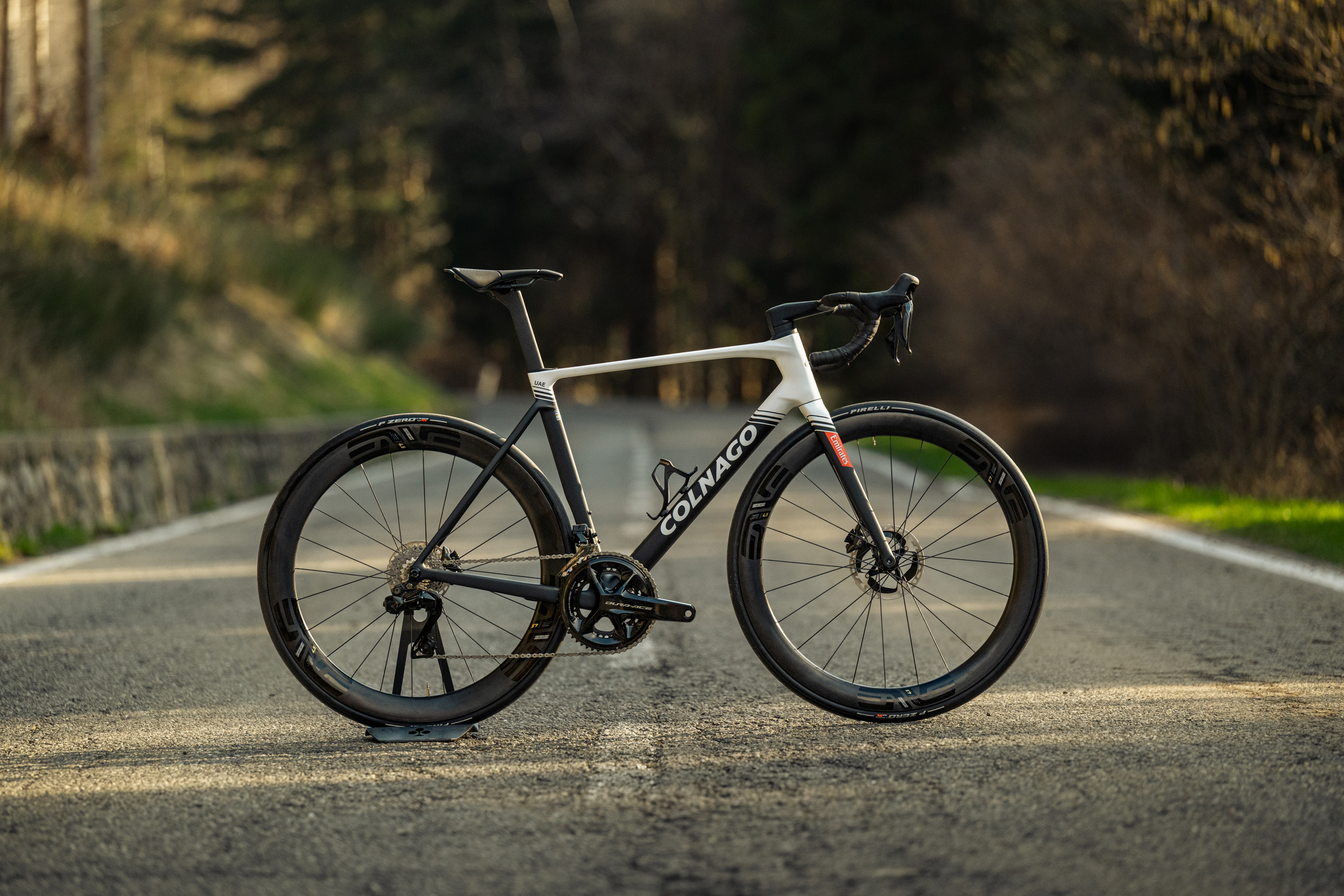
Where has the time gone? It feels like just last week when my esteemed colleague Will Jones spent time at the UAE Team Emirates winter training camp alongside Tadej Pogačar and co. to learn about their then-new Colnago race bike.
That was the V4Rs in December 2022, and today, less than two and a half years later, the brand has unveiled its replacement, the V5Rs.
Even by bike industry standards, a 2.5-year product cycle is an insanely quick turnaround for a high-end race bike, but it's especially wild given that, in that time, Colnago has also unveiled a host of other bikes.
Among them, the Italian brand has followed en-vogue trends with the 1x equipped C68 Gravel; harked back in time with a rim-brake equipped C68 'Wildcard'; and even gone futuristic with the Y1Rs, which looks more like an engineer's concept drawing than a finished race bike.
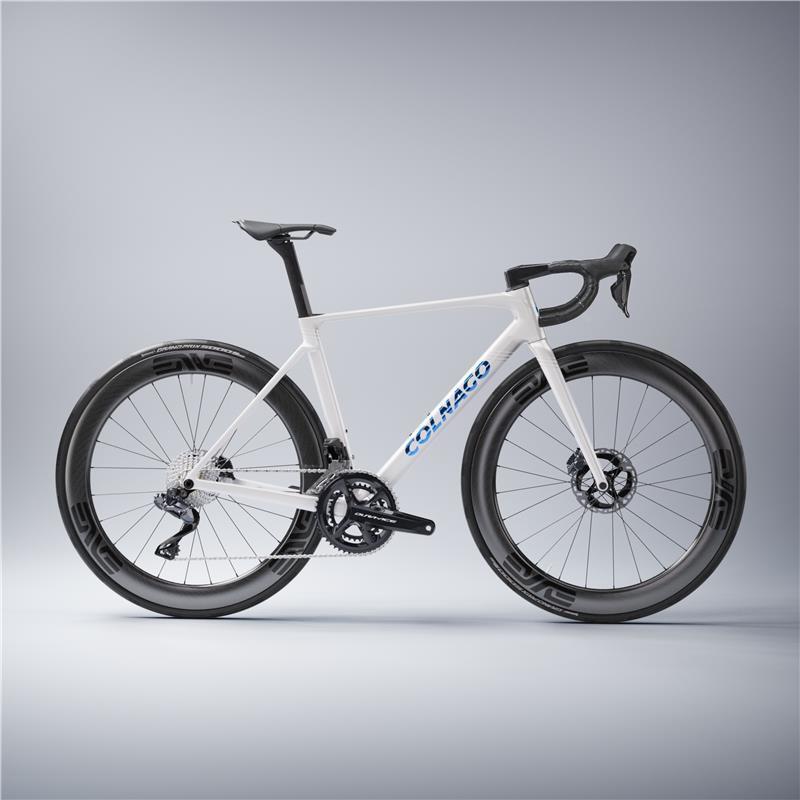
Today's launch of the V5Rs is none of those things. It's an iteration, an update, a small step forward rather than a historic leap. It's a step that, were it not for its talismanic superstar, feels like it might have taken longer to come.
But the brand openly admits its V series bikes aren't for the average consumer. The V5Rs is a bike for its pro racers, and when you're catering to the best in the world, there's undoubtedly a little more urgency.
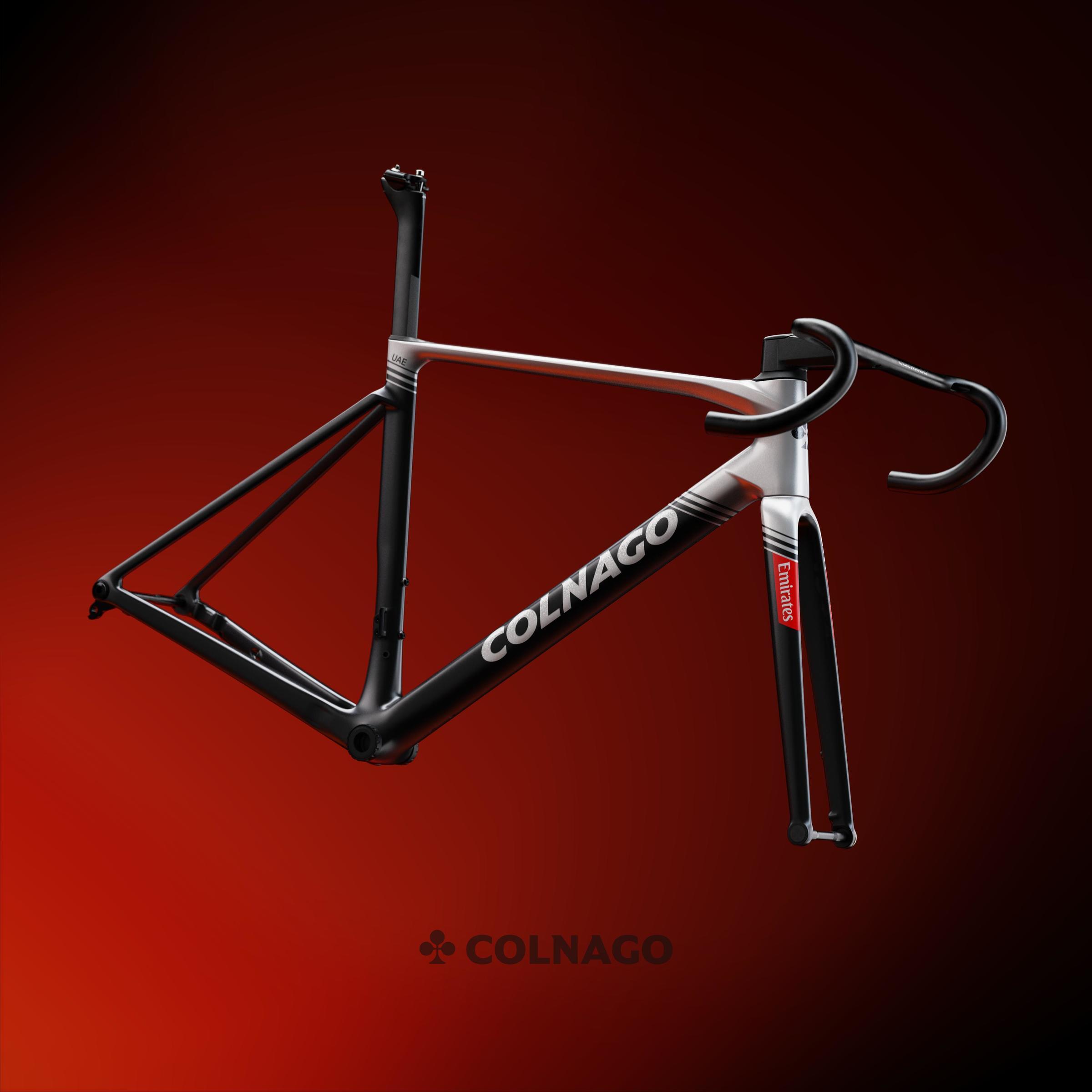
What's new
In a near full house in bike launch bingo, Colnago says the V5Rs is both lighter and more aerodynamic than its predecessor, while also being "aligned" on stiffness.
Specifically, the new frame in its ready-to-paint state is said to be 113g lighter than the old model. Couple that with the 33g lighter fork, and the total weight saving is a modest but not insignificant 146g.
That makes for a frame weight of 685g, or 1027g with fork, in the smallest size 485mm. This excludes the removable parts such as the seatpost clamp and derailleur hangers.
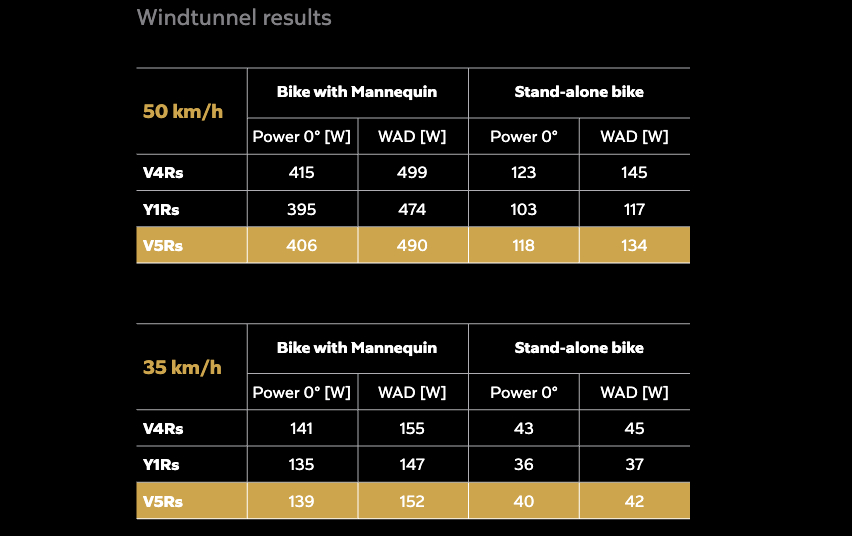
Aerodynamically, Colnago says the new bike sits roughly in between the outgoing V4Rs and its radical Y1Rs aero bike. Specifically, at zero degrees yaw (the angle at which the wind hits the bike, with 0º being a dead headwind), the V5Rs saves 9 watts against the V4Rs at 50km/h (with a static mannequin) as tested at the Politecnico di Milano wind tunnel.
The Y1Rs, for reference, is a further 11 watts more aerodynamic in the same test.
Across a yaw sweep at 2.5-degree increments from 0 to 12.5 degrees, the wind-averaged drag of the V5Rs equated to 490 watts at 50km/h and 139 watts at 35km/h (both with static mannequin). That puts it 9 watts better than the V4Rs at 50km/h, and 3 watts better at 35km/h.
Interestingly, when you look at the V5Rs, it doesn't immediately look like it's going to be more aero than the outgoing model. It's particularly svelte in appearance, with thin tubes all round, but that's where the brand says it found most of its gains.
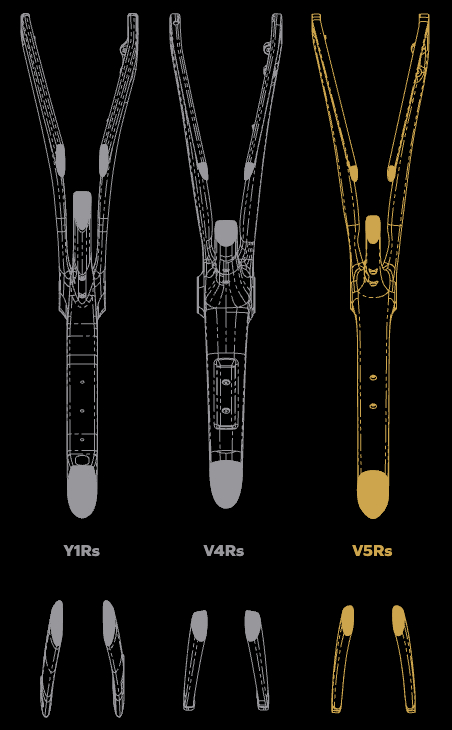
Through a thinner head tube, narrower fork legs and a reshaped seatpost which is thinner and deeper, the brand claims to have reduced the frontal area by 13%. Since CdA is an equation of the Coefficient of Drag x Area, reducing the 'area' is a simple yet smart way to reduce the bike's overall aerodynamic drag.
Colnago tells me the testing was performed on the same day and under the same protocols as its recently published test between the Y1Rs and the market-leading aero competitors.
Having compared the data from Colnago here to the whitepaper from that test, it's interesting – if perhaps expected – to see that the V5Rs doesn't quite outperform the 'best competitor' referenced there, but it does more than halve the deficit that befell the V4Rs.
Colnago is keen to ensure that 'best competitor' remains unnamed, but confirmed to me that the test included "pretty much the entire WorldTour." I have been promised a behind-the-curtain look at that data, so I will be sure to share as much as I'm allowed when it comes to writing my full V5Rs review in the coming months.
Despite the reduction in tube sizes and altered carbon layup, Colnago says the bike's stiffness remains on par with the outgoing model, both at the front of the bike for its handling and in the rear for power transfer.
Part of this came from the improved carbon layup, which utilised Finite Element Method software for structural analysis during the design process. More noticeably, though, the V5Rs' seat stay junction has moved up to join the seat tube nearer the top.
It's not quite returned to the traditional position of joining in line with the top tube, but could this be the start of a reversal of the trend towards lower seat stays that we've seen in recent years?
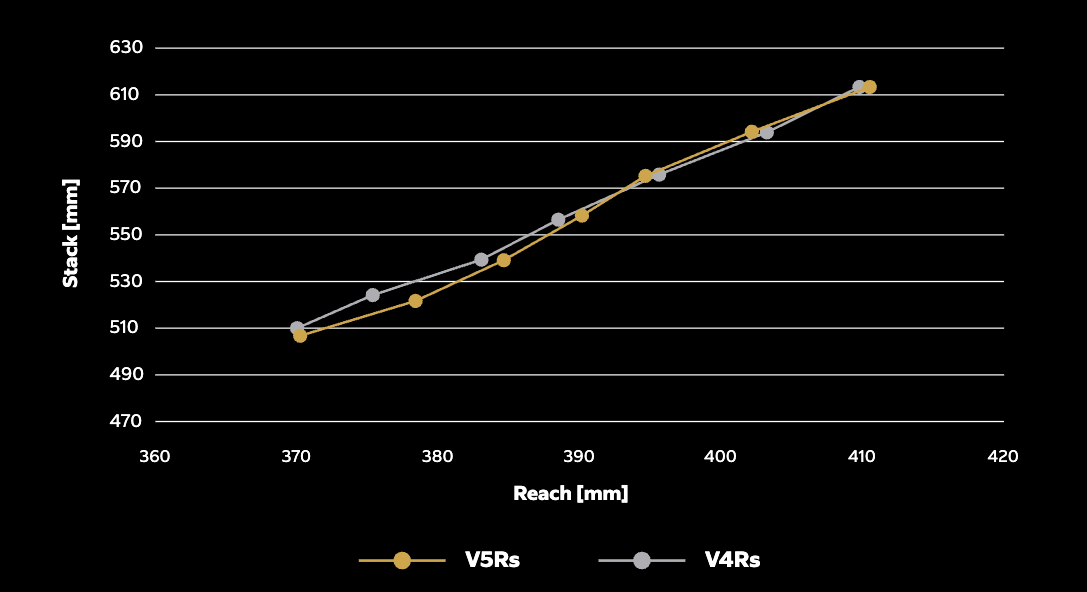
Finally, the frame has been given a few small tweaks to the geometry throughout the size run, with an overall view to make the V5Rs "slightly more aggressive," and to "better accommodate modern riding positions."
These tweaks were made partly using feedback from the pros, but primarily through V4Rs customer feedback and their buying habits. Noticing the trend towards wider tyres, the V5Rs doesn't get more tyre clearance – it sticks with 32mm – but it does get two different forks, size dependant, as a means to reduce the trail. Smaller frames (sizes 420 to 510) get a fork with a 47mm rake, while the bigger frames get a fork with a 43mm rake.
In addition, all frames get a steeper head tube and seat tube angle, as well as the option for an inline seatpost in addition to the 15mm setback. This, Colnago says, is to accommodate the trend towards a more forward-oriented position that modern racers are trending towards.
It's unclear whether those considerations of modern standards also extend to the crank length, which is trending towards shorter cranks, and handlebar width, which are getting narrower. Presumably customers will be able to take advantage of Colnago's online customisation program to spec their preferences, but the range of options available is yet to be confirmed.
Price and availability
The V5Rs will be available to order online and in Colnago stores immediately at launch.
It will be available in a frameset alone, priced at €5,940 for the frame kit. USA pricing will be $5,750, plus $900 for the CC.01 cockpit. UK pricing is to be confirmed.
Custom builds range top out at a staggering €16,500 via the online configurator.
Off-the-shelf complete builds start at €10,000 and rise to €15,900, in the following steps.
- €10,000: SRAM Force, Vision SC 45 wheels, Colnago CC.01 cockpit
- €10,800: Shimano Ultegra Di2, Vision SC 45 wheels, Colnago CC.01 cockpit
- €11,800: SRAM Red, Vision SC 45 wheels, Colnago CC.01 cockpit
- €12,800: Shimano Dura-Ace, Vision SC 45 wheels, Colnago CC.01 cockpit
- €14,700: Shimano Dura-Ace, Shimano C50 wheels, Colnago CC.01 cockpit
- €15,900: Shimano Dura-Ace, Enve SES 4.5 wheels, Colnago CC.01 cockpit
- €15,400: Campgnolo Super Record Wireless, Campagnolo Bora Ultra WTO, Colnago CC.01 cockpit







